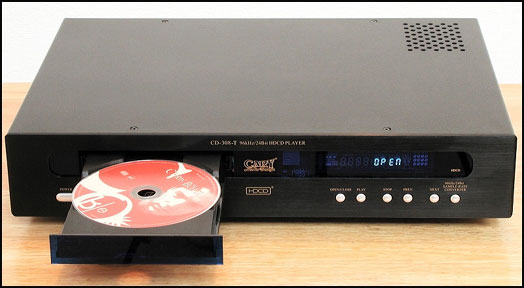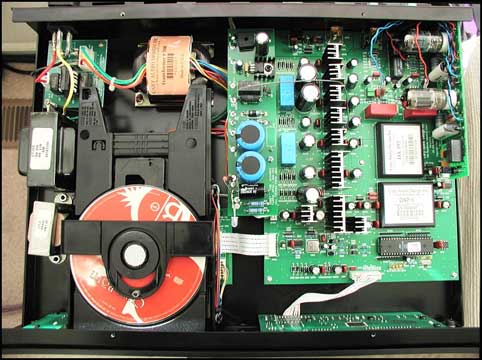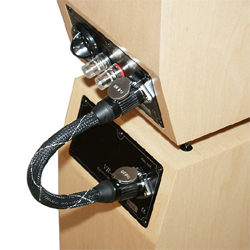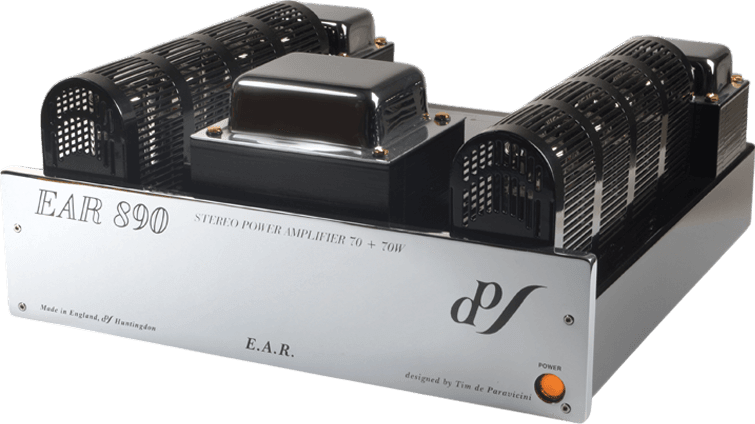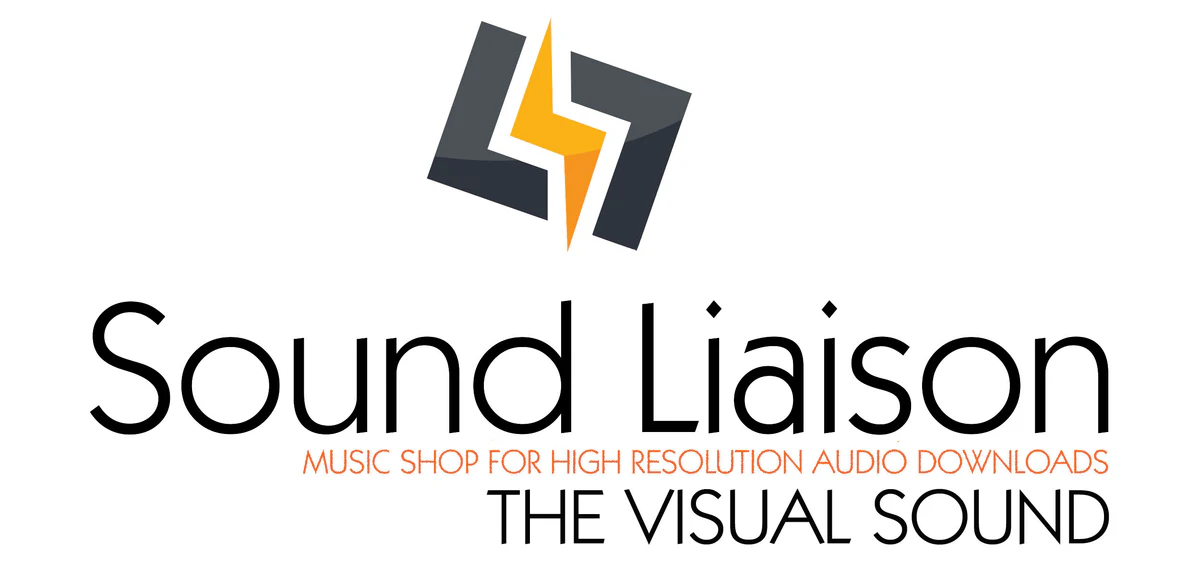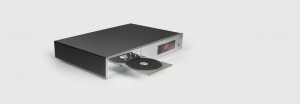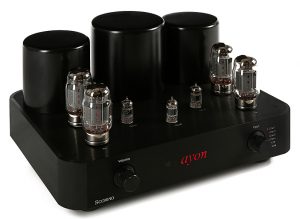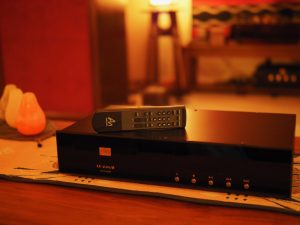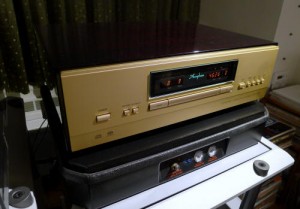This article by Sasha Matson originally ran in Issue 5, February/March 2003, so while we call this section "New Old Stock - Articles from Our Days in Print" you are also going to see some articles from our early days of going online.
It is to my fellow fence sitters that I speak. The time has come to act! After all, sitting on fences can get darn uncomfortable after awhile. As contrarian and freethinking as we audiophiles are, as much as we value our individuality and struggle mightily against conformity, we are always part of one demographic or another. It may not be a huge bubble, but I know I am not alone in quietly biding my time, trying to wait out the latest digital format wars. Meanwhile, the rest of my system has evolved with a step forward here and there, now and then a leap. Many of you have been there. In my case, it was first a real turntable and cartridge, then some magical Sonus Faber speakers, and most tellingly, 300SE monoblock amplifier s from Cary Audio. The inherent limitations of my trusty Marantz CD63SE were becoming more and more apparent, especially in relation to vinyl playback.
What to do, what to do? I tried to get with the SACD bandwagon when Sony finally dropped the price on their single-disc players to a reasonable level. How many SACD discs do I own to date? About a dozen, while that pile of CDs wasn't getting any smaller—over a thousand and still growing! There must be a way to extract more music from that investment, I mused, and lo and behold, a number of high end manufacturers hit the pavement with a new generation of old-fashioned Redbook CD players. As my dad likes to say, "Enough is enough!"
Who you gonna call?! Someone you trust, of course, and if you are particularly impressed with a piece of gear in your system, that is a good place to start. That led me quick as a bunny to Cary Audio and Dennis Had. Justly renowned for the quality of their tube amplifiers, Cary has tackled digital playback with a series of CD players, consisting to date of four models. A few months ago, Cary released the CD308, the entry-level model of their lineup. When I spoke with Dennis and told him what a big fan I was of his 300SE monoblocks, he suggested I wait a bit, as they were about to issue a new version of the CD308 player with a tubed output stage, the CD308T. "You are really going to like this," said Dennis demurely.
Christmas came early this year. The double box finally arrived. Cary had been breaking in the player before they sent it to me. We've all read of the mysteries of break-in time, and this seems to be particularly the case for CD players. It sounded fine right away, but I set it on repeat and kept it running continuously for the first weeks.
The CD308 and 308T ($2500) are identical except that the latter utilizes a triode-tubed output stage. Unlike its larger cousins in the Cary line (for the 306/200 see HERE and for the 303/200 see HERE, all so enthusiastically reviewed by Ed Morawski, Dave Clark, and Gary Beard), the 308T runs single-ended only. Included is a plastic remote. Damned if you do, damned if you don't—some have thought the other models' remotes were overkill. This one certainly isn't, but is a lightweight unit that includes features for running a Cary preamp. The transport is a Philips CDM12 that slams those CDs right in there. Long-term reliability? We'll see. The DAC is a Burr Brown PCM1704u, allowing upsampling to 24-bit/96kHz (the same as the 303/200). HDCD decoding is included. Upsampling is switchable on the fly, and volume level is controlled in 1-dB increments from the remote. Some have criticized the other Cary players for their flashing, overly bright blue front panel LEDs. With the more compact 308 models, this is not an issue—the display is very basic and only flashes when you put it in mute mode. The player weighs a solid 25 pounds, and to my thinking is a beautiful, functional piece of design. A pair of Philips JAN 5814A tubes, variants of 12AU7s, are shipped with the deck. Here is Dennis Had's description of the tubed output: The tube section in the CD308T is in fact the gain stage along with the buffer. I come direct off the DAC through a small passive three-pole filter to the control grid of the 12AU7.... There is a pair of relays that mute the output during the switching process from 44kHz to 96kHz. There are NO audio ICs in the signal path of the CD308T. The gain is all in the tubes!
I believe that a fine designer can make a difference in the digital domain, even given the complex nature of digital subcomponents, some of which are patented by the manufacturer (Burr Brown, HDCD, etc.). The sonic result—what Dennis Had likes to call the "presentation"—is amenable to creative thinking, and will vary by designer and company based on component choices, manufacturing quality, and the customization of hardware and software. Cary Audio has based its reputation on being a no-holds-barred company. Even though their CD players are built to specific price points, Cary's standards are so high that customers have come to rely on the company to deliver high quality. In the case of the CD308T, this is beautifully accomplished at its price, in large part by eliminating features that may not be relevant for many users. For instance, I was not interested in separate digital components, but was looking for a truly fine single-box player. Audiophiles who employ separate transports and DACs no doubt achieve wonderful results, but they are introducing another set of cables and power supply cords into the equation, and by less-is-better criteria, that is not a plus.
I have now had the Cary Audio CD308T in my system for two months, so break-in issues were resolved long ago. The sound did seem to fall into place after the first week or two. I compared the sound of SACD and Redbook CD playback on the modestly priced Sony DVPNS500V, one of the first affordable SACD players, with my Rega/Clearaudio turntable combo and with the 308T. There was also a curveball, as I also own a fine tubed phono stage designed by Dennis Had, the Audio Electronic Supply PH-1 (a superb device in the value-for-dollar category, but that is the subject for another review). Bear in mind that I am not trying to compare CD players in any sort of "shootout," but hope that this review can be helpful in demonstrating how much better digital playback can be right now.
As a composer, I hope my vantage point will shed some additional light on these matters. I recorded an album for Audioquest Music titled I-5. This album was recorded in Studio B at Ocean Way Studios in Hollywood recording, produced by Joe Harley, and engineered by Michael C. Ross. I chose the first movement of the title piece, a composition for string quintet and concert harp. Listening to the Audioquest Redbook CD, the Sony was the least able of the three to clearly resolve the needlepoint string harmonics that open the piece. Realistic stage depth was missing—Studio B seemed foreshortened. As the conductor, I have a clear impression of how that room sounded. Stage width was not as lifelike and convincing as it was with either the Cary or vinyl playback. With the Cary in 96kHz upsampling mode, there were fewer conflicting overtones, resulting in a noticeably clearer and more stable sonic image. The recording studio's depth and sonic "footprint" were ably conveyed. There was more of the "breath of life." The Cary revealed the textures of string bow sounds that are so much a part of the authenticity of chamber music recordings. In addition, the concert harp struck me as more delicate, without the hollow ringing of a false decay time.
Going to the vinyl, a fine 180-gram Audioquest pressing, it was still thumbs up for LPs. This chamber music grouping of six was placed and held in focus, revealing the individual instruments and players. I could hear the differences in timbre between instruments that I know are there. The vinyl playback produced the widest stage and the most realistic portrayal of the back wall in Studio B. The eerie verisimilitude, lovely, sexy, and full of life, took me back in an audio time machine to a wonderful session, recorded over a decade ago.
Returning to the Cary 308T, I noticed that the low tones of the string bass, tuned down to a low C, were beautifully presented. When the harp and contrabass were playing low unisons, a la Mahler, they give a bedrock foundation to the music that I intended when I wrote it, and which I recall from the live performance. The breathing (literally) of the musicians was very much part of the experience when listening to the Cary, and the size of Studio B was very clearly laid out. The 308T got me a whole lot closer to the actual musical experience than I thought was possible from digital playback.
Take The Reiner Sound in the Classic Records vinyl pressing vs. the fine JVC XRCD disc with the Cary upsampling at 96kHz. The 308T delivered almost as wide a soundstage as the Rega, and that's going some! The 308T was certainly not brighter or harsher. The Cary did have slightly more low-end impact and extension than the vinyl, but not in that bloated, digital, "boombox" sense. The CD was indeed very fine. String pizzicato was very convincing, with a real sense of the visceral "pop" you hear in concert settings. Percussion was excellent, sparkling without being overly metallic. Concert harp was nicely integrated, and that instrument has a tendency to pop out of the mix if badly reproduced. Stage depth was comparable between CD and LP, with a slight edge going to the vinyl, but it is definitely there with the 308T.
Comparing the 308T to the Sony deck, the differences became more striking. Bear in mind, I'm talking apples and raisins here, not oranges and oranges. With the 308T still upsampling to 96kHz, I compared Redbook CD playback of The Reiner Sound of the two players. First and most obvious was that the Cary threw a much wider soundstage. Part of this may be the upsampling—many people note a wider soundstage as one of its benefits. The Sony had less air, harmonic texture, timbral accuracy, and color. The Cary displayed an increased sense of orchestral breath and layering, and its ability to resolve multiple parts was tangible. The stage depth of the two players seemed comparable. With percussion effects, the Sony lacked decay and realistic ring by comparison. The Cary was far more authoritative on the low end, with a greater top-to-bottom cohesion and less of a sense of any frequency "bumps."
One of my favorite reference recordings is Give It Up To Love by Mighty Sam McClain, originally released by Audioquest Music on both vinyl and CD, and since re-released as a JVC XRCD. Comparing the XRCD's title track on the Sony and on the Cary in upsampling mode, the "glisten" of the Hammond B-3's rotating Leslie speaker was not happening on the Sony. Sam McClain's voice was lacking its full baritone impact. The band slams at 2:25 were missing their full, ass-kicking low end. With the 308T I heard the band more convincingly displayed across a much wider room. The B-3 was there in its sexy, rotating glory. The elements of the drum set were more defined with the Cary, and Mighty Sam's voice got down with its "red clay" R&B authenticity. The warmth and solidity of Studio B at Ocean Way came through loud and clear. The band slams at 2:25 had their full electric energy, with the Fender bass sliding down to the basement.
How about SACD? Somehow I ended up with two copies of Café Blue by Patricia Barber, one Redbook and the other a Mobile Fidelity hybrid SACD, and I don't even like this album that much (I prefer her Nightclub), but maybe that allowed me to be more objective. Listening to the Sony in SACD mode, the sibilants of Barber's vocal on "What a Shame" seemed overly accentuated, along with the extensive studio reverb. Dig this—I swear the Cary 308T still threw a wider stage! Dynamics via the Cary seemed more lifelike and musical than with the SACD. Take the word "cry" at 38 seconds into the track. With the Cary, this was not so over the top and hot as it was with the Sony. Less can be more musical. The low end on both machines was comparable. The heavily processed electric guitar solo about halfway into the song was not so cuckoo and fuzzed-out when listening to the Cary as it seemed via the Sony. I ran the SACD/Cary comparison by two fellow audiophiles, and they found it a very close call, too close to make in several cases of blind A/B switching.
I am a tube guy, and make no bones about it. I honestly believe the Cary CD308T has reduced digitalis to an absolute minimum. The tubed output stage assists in that effort in a commonsense, effective manner. I can comfort myself, as I switch from CD to vinyl, that I am still listening to a tubed playback chain, and that knowledge increases my listening pleasure. This fence sitter is through with being an early adopter. I do have the workmanlike Sony unit on hand as I acquire more SACDs, but for the foreseeable future, the Cary 308T will allow me to squeeze more great music out of those shelves of CDs in the back room. It makes me smile to listen to it.
We need a whole new batch of adjectives in the high end that can apply to something as fine as what Dennis Had has accomplished, so here goes. How about "dappled," one of my favorite words, imported from Victorian poetry and the visual arts? It means "subtle flashing shades of light and dark splayed across a natural surface," and seems like a good place to start in terms of trying to describe the uncanny ability of the CD308T to resolve musical information without a hint of bitterness. Perhaps the high end could also benefit from borrowing from the vocabulary of wine critics? Let me say that the CD308T met my ears with ripe, vibrant, berry-like flavors, hints of apricot, mint, and sage, with earthy dry clay tones and a long deep blood-red finish. And that was with a Kenny G CD!
I can firmly and forcefully commend the Cary Audio CD308T to your attention. I can't imagine anyone regretting giving it a serious audition. Here's something I have been looking forward to writing for some time now: I'm buying the review unit!
Cary Audio Design
919. 481. 4494




